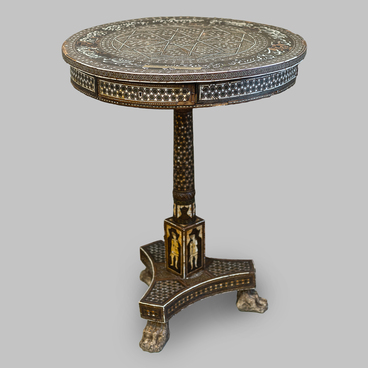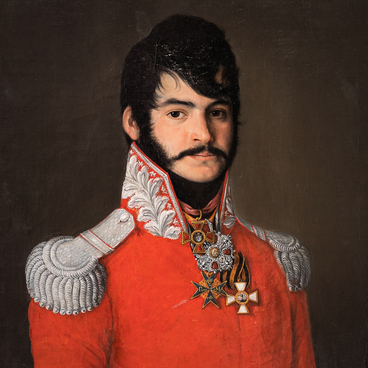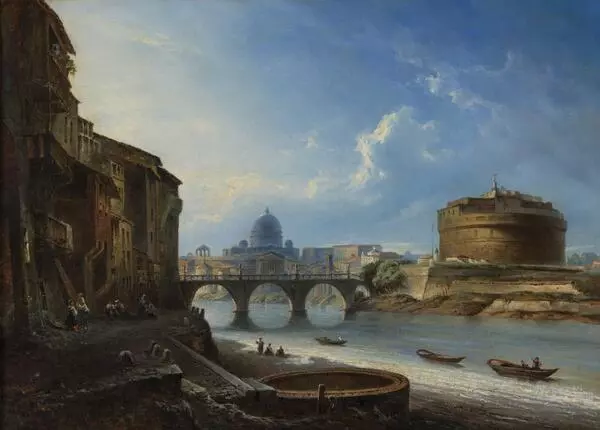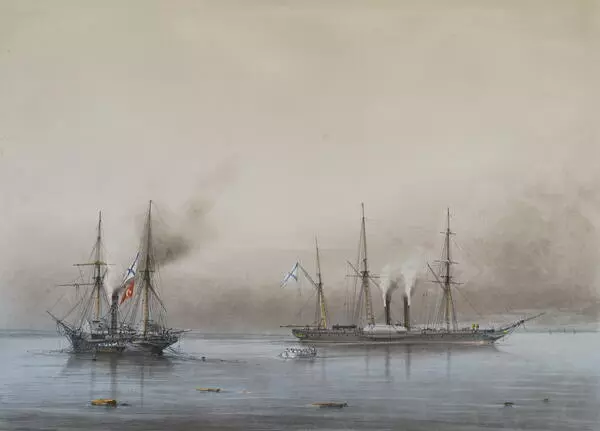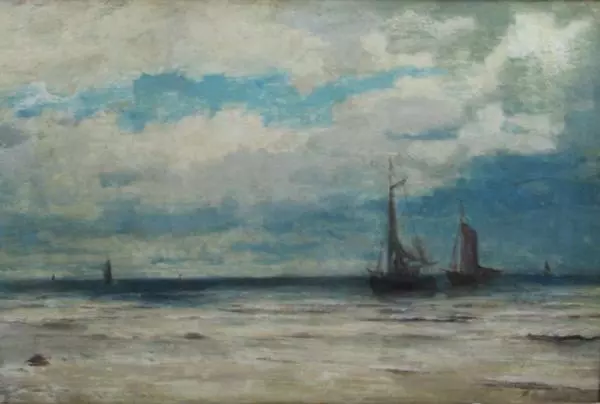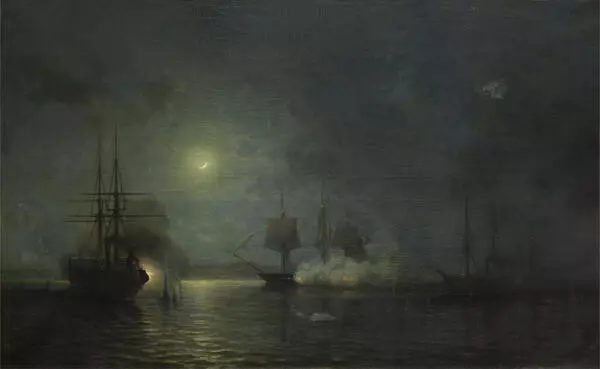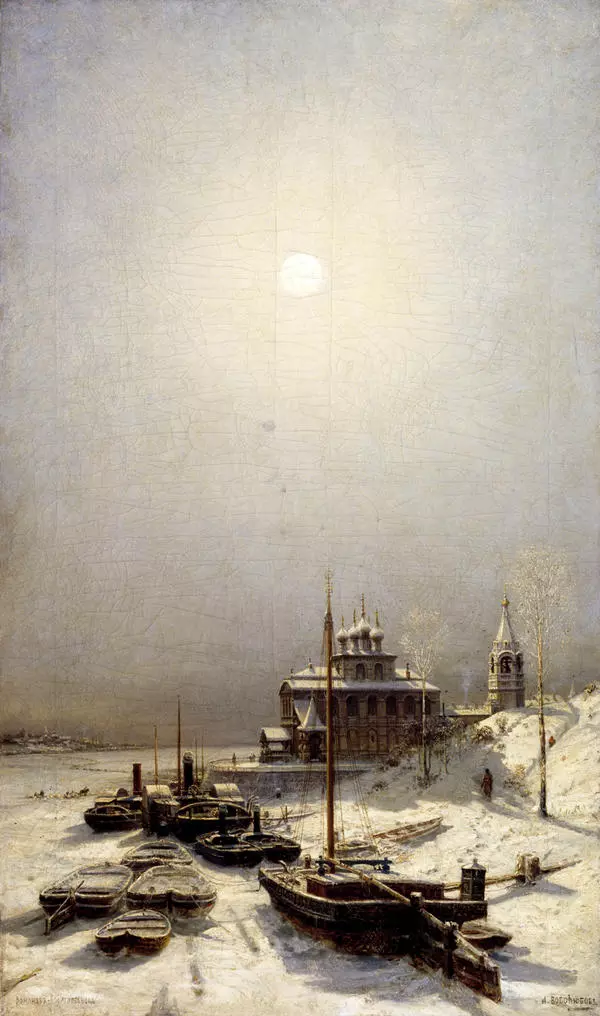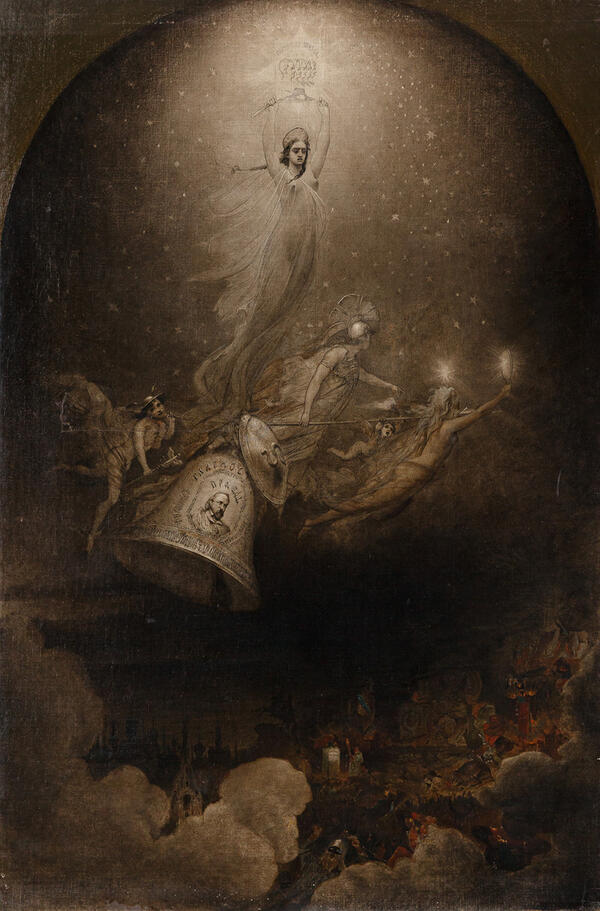The painting ‘Low Tide in Le Tréport’ was created by Russian artist Alexey Bogolyubov in the second half of the 19th century. For this canvas, he chose a realistic style combining a seascape with a genre scene of collecting seashells on the coast after a low tide.
This coast was named Alabaster, as steep chalk cliffs of dull white color with a slight touch of yellowness stretch along the coast for more than 100 kilometers. Due to their picturesque appearance, they were often chosen by many European artists for their paintings.
Alexey Bogolyubov was born in 1824 in the village of Pomeranye, Novgorod province. His father was Colonel Pyotr Bogolyubov, a veteran of the 1812 Patriotic War, and his mother was Fyokla Radishcheva, the daughter of the famous writer Alexander Radishchev.
Bogolyubov lost his father early in his life. In 1832, he was sent to the Alexander Cadet Corps for young orphans, and two years later he was transferred to the Naval Cadet Corps. Bogolyubov began drawing while still studying. He recalled, ‘The passion for drawing also ruined me because I drew caricatures in my leisure hours, which only multiplied my troubles.’
In 1841, Bogolyubov graduated from the Naval Corps and entered the service in the rank of midshipman. He often sailed abroad, but even then, he continued to paint. In 1850, following the advice of the president of the Imperial Academy of Arts, Duke Maximilian of Leuchtenberg, Bogolyubov entered training and received permission to combine lessons in a landscape class with his service in the navy.
In 1853, Bogolyubov graduated from the Academy with a gold medal of the 1st class. He received an appointment as an artist to the General Naval Headquarters and a large order from Emperor Nicholas I to complete seven paintings about the events of the Crimean War. After leaving the navy, Bogolyubov traveled throughout Europe for seven years, studying under masters in Geneva, Paris and Dusseldorf. In 1856, Bogolyubov traveled to Constantinople, the Danube and Sinop to paint sketches from life for the imperial order.
In 1860, Bogolyubov came back to Russia from an overseas creative trip with a large number of paintings and a lot of new sketches. After the success of his one-man show, he received the title of art professor from the Academy. Emperor Alexander II bought the entire Crimean cycle and made a new order to paint the history of Peter the Great’s fleet in paintings.
In the 1860s — 1870s, Bogolyubov worked on orders from the Hydrographic Department of the Naval Ministry and traveled around Russia while painting a lot. In 1885, he established the country’s first open museum in Saratov, which was named after his grandfather — the Radishchev Museum.
Bogolyubov spent the last years of his life in Paris, occasionally visiting Russia. On his initiative, a society for mutual assistance to Russian artists appeared in Paris. The artist died in the French capital on November 7, 1896, but his body was brought to Russia and buried in St. Petersburg.
This coast was named Alabaster, as steep chalk cliffs of dull white color with a slight touch of yellowness stretch along the coast for more than 100 kilometers. Due to their picturesque appearance, they were often chosen by many European artists for their paintings.
Alexey Bogolyubov was born in 1824 in the village of Pomeranye, Novgorod province. His father was Colonel Pyotr Bogolyubov, a veteran of the 1812 Patriotic War, and his mother was Fyokla Radishcheva, the daughter of the famous writer Alexander Radishchev.
Bogolyubov lost his father early in his life. In 1832, he was sent to the Alexander Cadet Corps for young orphans, and two years later he was transferred to the Naval Cadet Corps. Bogolyubov began drawing while still studying. He recalled, ‘The passion for drawing also ruined me because I drew caricatures in my leisure hours, which only multiplied my troubles.’
In 1841, Bogolyubov graduated from the Naval Corps and entered the service in the rank of midshipman. He often sailed abroad, but even then, he continued to paint. In 1850, following the advice of the president of the Imperial Academy of Arts, Duke Maximilian of Leuchtenberg, Bogolyubov entered training and received permission to combine lessons in a landscape class with his service in the navy.
In 1853, Bogolyubov graduated from the Academy with a gold medal of the 1st class. He received an appointment as an artist to the General Naval Headquarters and a large order from Emperor Nicholas I to complete seven paintings about the events of the Crimean War. After leaving the navy, Bogolyubov traveled throughout Europe for seven years, studying under masters in Geneva, Paris and Dusseldorf. In 1856, Bogolyubov traveled to Constantinople, the Danube and Sinop to paint sketches from life for the imperial order.
In 1860, Bogolyubov came back to Russia from an overseas creative trip with a large number of paintings and a lot of new sketches. After the success of his one-man show, he received the title of art professor from the Academy. Emperor Alexander II bought the entire Crimean cycle and made a new order to paint the history of Peter the Great’s fleet in paintings.
In the 1860s — 1870s, Bogolyubov worked on orders from the Hydrographic Department of the Naval Ministry and traveled around Russia while painting a lot. In 1885, he established the country’s first open museum in Saratov, which was named after his grandfather — the Radishchev Museum.
Bogolyubov spent the last years of his life in Paris, occasionally visiting Russia. On his initiative, a society for mutual assistance to Russian artists appeared in Paris. The artist died in the French capital on November 7, 1896, but his body was brought to Russia and buried in St. Petersburg.


